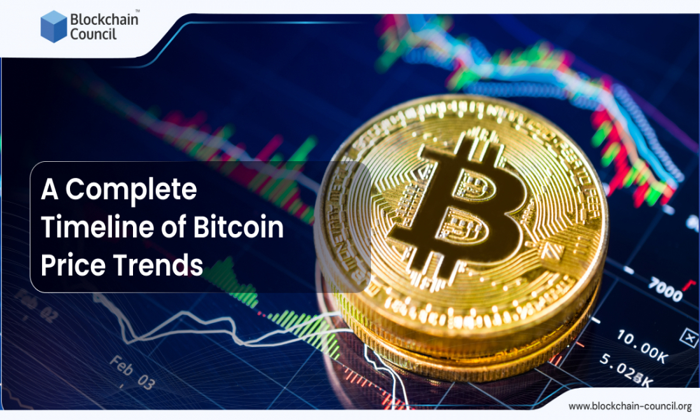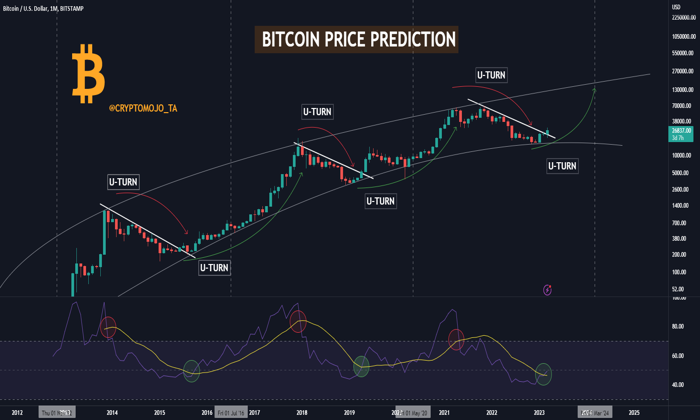Bitcoin and Global M2 are at the heart of a burgeoning conversation among financial enthusiasts and crypto market analysts. As macroeconomic factors intertwine with cryptocurrency movements, many speculate that fluctuations in the M2 money supply—an indicator of overall liquidity in the economy—could lead to a significant Bitcoin rally. Influential figures on social media have begun to share compelling charts indicating that Bitcoin’s price trajectory has historically mirrored changes in the Global M2, suggesting a potential upswing in the coming weeks. However, this bullish sentiment is not without skepticism, as seasoned analysts raise concerns about the validity of the data tied to these assertions. With Bitcoin price predictions sparking heated debates, the discourse highlights the complex relationship between central bank policies and cryptocurrency valuations, urging investors to remain vigilant in their financial strategies.
The dynamics of Bitcoin and the global money supply present an intriguing narrative that blends cryptocurrency with traditional monetary policy. Discussions surrounding Bitcoin price forecasts often reference M2, a comprehensive measure of money that encompasses various liquid assets. As the crypto community increasingly scrutinizes patterns drawn between Bitcoin and the M2 money supply, it’s essential to navigate through both optimistic projections and critical analyses. The interplay between monetary expansion and Bitcoin’s valuation raises questions about the sustainability of recent price movements. By examining the broader economic context, one can better understand how financial influencers shape market sentiment and the implications this has for potential investment strategies.
Understanding Global M2 Money Supply and Its Impact on Bitcoin
Global M2 money supply represents a comprehensive metric that aggregates the broad money available in various economies, converted to US dollar terms. It includes cash, checking deposits, and easily convertible near money, making it a crucial indicator for assessing liquidity in the financial system. Recently, financial influencers have suggested that increasing Global M2 could serve as a catalyst for a Bitcoin rally. This aligns with the growing concept that as more money circulates in the economy, assets such as Bitcoin can thrive due to heightened liquidity and investor enthusiasm.
However, the assertion that expanding Global M2 will directly lead to a surge in Bitcoin prices has sparked debate. Critics assert that the correlation drawn between Bitcoin and Global M2 is overstated and may not reliably predict market movements. As TXMC pointed out, the disparity in how M2 data is reported across nations complicates its utility as a guiding metric for Bitcoin valuation. Thus, while some argue for a potential Bitcoin rally based on the M2 increases, a careful examination of the data suggests that the relationship is far from straightforward.
The Bullish Outlook: Are Financial Influencers Right About Bitcoin?
Twitter and other platforms have become breeding grounds for optimistic forecasts regarding Bitcoin’s trajectory, especially in light of recent discussions surrounding M2 money supply. Influencers like Raoul Pal have boldly proclaimed that the conditions are ripe for a significant Bitcoin appreciation, citing structural economic shifts. This bullish sentiment often capitalizes on the historical precedent where increased money supply leads to asset inflation, a theory that many investors cling to as they watch Bitcoin’s potential align with macroeconomic trends.
Yet, the enthusiasm fueled by such proclamations can create a psychological effect on the market, prompting a collective buy-in from retail and institutional investors alike. Despite this, caution is warranted, as market analysis suggests that such predictions should be treated with skepticism. The fluctuating nature of the cryptocurrency market often reacts markedly to external factors, and while many influencers advocate for a bullish stance, maintaining a critical perspective is essential for sound investment strategies.
Analyzing Bitcoin’s Price Predictions Amidst Economic Changes
As market speculation intensifies regarding Bitcoin’s future pricing, analysts are increasingly focused on macroeconomic variables like Global M2. The prevailing opinion suggests that the expansion of monetary supply could propel Bitcoin to new heights, with predictions of prices exceeding $74,500 circulating among crypto enthusiasts. Such bullish forecasts, while enticing, require rigorous evaluation against historical data and trends in the crypto market. The volatility of Bitcoin often contrasts sharply with broader economic indicators, raising questions about the reliability of price predictions tied to M2 fluctuations.
Additionally, with many believing that Bitcoin will soon experience a significant price explosion, it is essential to analyze the underlying mechanics of such theories. Historical patterns suggest a cautious approach; while Bitcoin often reflects movements in money supply, the degree and timing of this correlation vary significantly. Thus, although influencers paint a rosy picture of Bitcoin’s trajectory linked to M2, investors must critically assess these predictions and consider market dynamics that could challenge such bullish narratives.
Critique of Bitcoin and Global M2 Correlation Claims
Despite the optimism surrounding the correlation between Bitcoin and Global M2, some seasoned market analysts argue that the relationship may be grounded more in speculation than in quantitative evidence. Critics like TXMC have voiced concerns that many charts proposing a direct correlation rely on selective data interpretations and fail to account for the complexities in global monetary reporting. The reliance on ‘random week offsets’ to illustrate a supposed alignment between Bitcoin prices and M2 growth raises red flags regarding the credibility of such analyses.
Furthermore, the critique expands on the observation that China’s significant role in the Global M2 landscape complicates any straightforward assertions about the relationship with Bitcoin. With China’s M2 showing signs of growth while U.S. M2 stagnates, the narrative shifts from a clear-cut correlation to a more nuanced dialogue about how varying national economic conditions can skew perceived relationships in the crypto market. Thus, investors are urged to adopt a diversified view that considers broader economic signals rather than overly simplistic models.
Market Sentiment: The Role of Financial Influencers
In the era of social media, financial influencers wield significant power in shaping market sentiment, particularly within the cryptocurrency realm. Figures like Colin Talks Crypto and Raoul Pal have amassed large followings, and their Bitcoin price predictions can sway public perception and potentially move markets. This phenomenon is particularly seen when influencers link Bitcoin’s performance to broader economic indicators such as Global M2, tapping into a narrative that resonates with many would-be investors seeking timely insights on market conditions.
However, while influencer-driven enthusiasm for Bitcoin can foster immediate buying interest, it can also dilute analytical rigor among those aiming to understand the intricate nature of financial markets. The potential for misinformation or over-simplification can lead to misguided investment decisions. Investors are encouraged to seek a balanced approach that combines influencer narratives with comprehensive market research, ensuring that enthusiasm is matched by informed decision-making.
Understanding the Complex Relationship Between Bitcoin and Global Economics
The interaction between Bitcoin and the broader economic framework, particularly through the lens of Global M2, presents a complex tapestry of cause and effect. While many argue that expanding money supply enhances Bitcoin’s intrinsic value, the actual dynamics at play are more ambiguous. Economic conditions affecting liquidity, interest rates, and investor behavior play a critical role in shaping Bitcoin’s price action, implying that simplistic correlations drawn from M2 data may overlook crucial variables.
Moreover, grasping the intricacies of monetary policy and its implications for cryptocurrency valuation remains essential for investors. Bitcoin, often seen as a hedge against inflation, must be analyzed within the context of changing economic environments, central banks’ responses, and the geopolitical landscape. Consequently, having a deep understanding of these factors will enable investors to navigate market fluctuations more effectively and make sound decisions amid the evolving crypto world.
Evaluating Bitcoin’s Resilience Amid Economic Turmoil
Bitcoin’s ability to withstand economic headwinds has garnered attention over the past years, especially during periods of increased M2 money supply. Proponents of Bitcoin advocate that the digital asset’s finite supply makes it an attractive alternative amid rising inflation and economic uncertainty. As central banks around the world adjust their monetary policies, the pressure on traditional currencies could create a favorable environment for Bitcoin and similar cryptocurrencies.
However, the reality is that Bitcoin’s resilience can often be tested by myriad factors, including speculative trading, regulatory changes, and shifts in market sentiment influenced by social media. As seen in past market corrections, Bitcoin’s volatility can be exacerbated by external conflicts and economic fluctuations, which may dampen its perceived role as a safe-haven asset. Thus, investors should approach Bitcoin with a clear understanding of its dual nature as both a potential store of value and a speculative investment.
The Future of Bitcoin: Speculation or Viable Investment?
As Bitcoin continues to capture the interest of public and private investors alike, discussions on its future value become increasingly nebulous. The interplay between Bitcoin and economic indicators, notably Global M2, adds layers of complexity to forecasting its trajectory. While some experts predict aggressive price growth fueled by expanding money supply, others emphasize caution, urging investors to consider the myriad factors influencing market dynamics beyond simplistic correlations.
Ultimately, the future of Bitcoin pivots not only on macroeconomic variables but also on market sentiment, technological developments, and regulatory frameworks. While predictions will continue to circulate, informed decision-making remains paramount; investors who critically analyze Bitcoin’s evolving landscape and its intersection with economic indicators will be best positioned to navigate the uncertainties inherent in this rapidly changing market.
Frequently Asked Questions
How does Global M2 money supply affect Bitcoin price prediction?
Global M2 money supply refers to the total amount of money available in an economy and is a crucial indicator for Bitcoin price prediction. Many analysts believe that an increase in Global M2 can lead to a Bitcoin rally, as more liquidity in the market may boost investments in cryptocurrencies. However, the relationship is complex, and while some financial influencers argue for a positive correlation, seasoned analysts caution against relying solely on M2 data as a definitive predictor.
Can an increase in Global M2 lead to a Bitcoin rally?
Yes, an expansion in Global M2 is often associated with increased liquidity, which can potentially lead to a Bitcoin rally. Influencers in the crypto market analysis space suggest that when central banks create more money, Bitcoin becomes more attractive as an alternative store of value. Nonetheless, this perspective is debated among market analysts who recommend examining broader economic conditions rather than just M2 figures.
What are the critics saying about the relationship between Bitcoin and Global M2?
Critics, such as market analyst TXMC, argue that the correlation between Bitcoin and Global M2 is overstated. They point out that relying on daily or weekly data for Global M2 is misleading since major economies report M2 monthly. Moreover, critics suggest that visual correlations may be artificially created through random offsets, and they emphasize the need for a more nuanced understanding of the economic frameworks influencing Bitcoin’s price.
What role do financial influencers play in Bitcoin and Global M2 discussions?
Financial influencers significantly shape public perception and market sentiment regarding Bitcoin and Global M2. Through social media, they share charts and analyses that suggest potential price movements linked to changes in M2 money supply. However, their proclamations should be taken with caution, as they may simplify complex financial data to cater to followers, sometimes leading to misinformation.
How should investors interpret Bitcoin price movements in the context of Global M2?
Investors should approach Bitcoin price movements in the context of Global M2 with skepticism and thorough analysis. While increased Global M2 may signal potential bullish trends, it is essential to consider a wide range of factors influencing the crypto market, such as geopolitical events, regulatory changes, and overall economic health. Relying solely on M2 can lead to inadequate investment decisions.
Is there a genuine correlation between Bitcoin’s price and Global M2 money supply?
There is an ongoing debate regarding the genuine correlation between Bitcoin’s price and Global M2. Some analysts propose a lagging correlation, suggesting that Bitcoin tends to reflect movements in M2 money supply with a time delay. However, other critiques highlight that the correlation can be misleading due to the nature of data reporting and market dynamics. Investors should analyze multiple economic indicators rather than focusing solely on M2.
What recent trends in Global M2 could impact Bitcoin?
Recent trends indicate that while some countries, particularly China, have seen their M2 rise post-COVID, other economies like the US have seen slower growth rates. These disparities can impact Bitcoin prices differently across global markets. When a country’s M2 increases, it could lead to more investment in Bitcoin as an asset, but investors must consider the context within the broader economic framework.
| Key Point | Details |
|---|---|
| Bullish Proclamations | Influencers claim that a fresh expansion in Global M2 will lead to a rally in Bitcoin. |
| Raoul Pal’s Influence | Raoul Pal shared a chart suggesting Bitcoin mirrors Global M2, predicting growth soon. |
| Criticism from TXMC | TXMC argues that daily or weekly Global M2 data is unreliable and misleading. |
| China’s Role | China’s M2 is increasing, unlike the US, which shows slower growth in M2 compared to its 2022 peak. |
| Debate on Data Validity | Critics claim charts correlating Global M2 and Bitcoin use over-fitted data and misleading offsets. |
| Current Bitcoin Status | As of press time, Bitcoin trades at $84,750, remaining below a downtrend line. |
Summary
Bitcoin and Global M2 have recently captured the attention of macroeconomic analysts and crypto enthusiasts alike. While many bullish influencers suggest that an increase in Global M2 will lead to immediate Bitcoin price surges, seasoned market analysts caution against taking these forecasts at face value. They highlight the complexities and potential inaccuracies in correlating Bitcoin trends with the varying updates of Global M2 data across countries. As China continues to increase its M2, while the U.S. sees a slowdown, it raises important questions about the interconnectedness of cryptocurrency and global monetary policies. Understanding the nuanced dynamics between Bitcoin and Global M2 is essential for investors as they navigate potential market fluctuations.
Bitcoin and Global M2 are at the center of heated discussions among financial experts and influencers, with many suggesting that a surge in the M2 money supply could lead to a significant rally in Bitcoin’s price. As Bitcoin’s value continues to fluctuate, analysts are keen to understand the interplay between the cryptocurrency and the expanding global money supply. Insights from macro-influencers like Raoul Pal have sparked optimism, predicting a price explosion and calling for immediate action as charts reveal a possible correlation. However, seasoned analysts cast doubt on these optimistic forecasts, arguing that the data might be misleading. As the crypto market analysis unfolds, investors are left contemplating whether the current trends signal a genuine rally or if they’re merely riding a wave of speculative sentiment driven by emerging narratives.
The dynamic interplay between cryptocurrencies and the broader monetary landscape has become an essential topic among traders and financial analysts alike. Terms like ‘digital currency’ and ‘money supply expansion’ have replaced traditional fiscal discussions as investors shift their focus to the implications of M2 on assets like Bitcoin. Influencers in the financial realm are quick to offer Bitcoin price predictions that hinge on shifts in global money metrics, igniting debates about potential market movements. With various voices weighing in, the question arises: is the historical lag between Bitcoin and M2 a reliable forecast model, or simply a result of over-fitted data? As discussions evolve, understanding the implications of money supply changes on digital assets remains a crucial consideration for both seasoned traders and newcomers in the crypto space.













